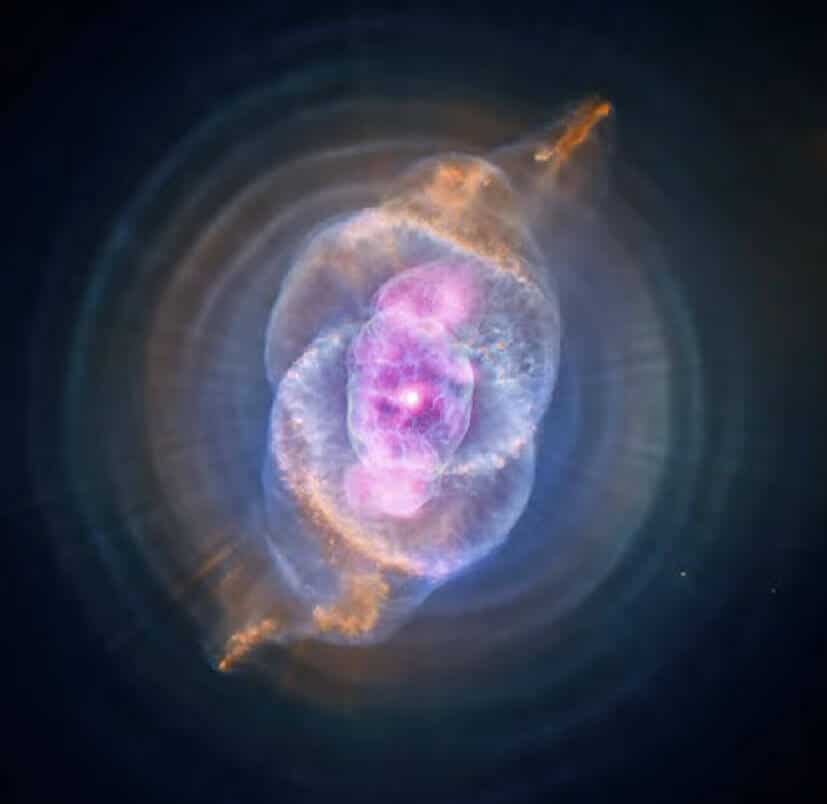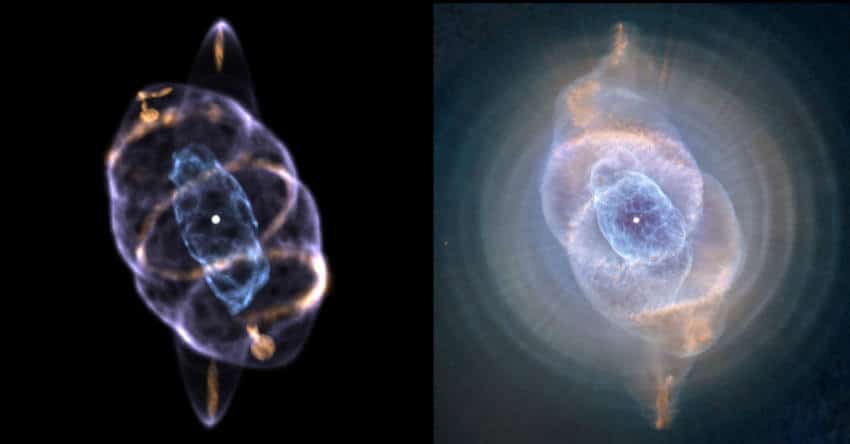Astronomers have discovered rings with almost perfect symmetry in the Cat's Eye Nebula located about 3,000 light years from Earth

Researchers have built the first XNUMXD computer model of the Cat's Eye Nebula, which reveals a pair of symmetrical rings around the nebula's outer shell. The symmetry of the rings indicates that they were formed by a jet originating from the nebula's central star. This is clear proof of the existence of a binary star in the center of the nebula. The research, led by Ryan Claremont, was recently published in the journal Monthly Notices of the Royal Astronomical Society.
A planetary nebula forms when a dying star ejects its outer layer of gas, creating a colorful shell-like structure that is unique to planetary nebulae. NGC 6543, or the Cat's Eye Nebula, is one of the most complex planetary nebulae known. It is a little more than 3,000 light years away from Earth, and can be seen in the Dragon group. The Cat's Eye Nebula was also seen in great detail by the Hubble Space Telescope, showing a complex structure of knots, globular shells and bow-like filaments.

The mysterious structure of the nebula puzzled astrophysicists because it could not be explained by the previously accepted theories of the formation of planetary nebulae. More recent research has shown that jets are potential shaping mechanisms in complex planetary nebulae like NGC 6543, but a detailed model has been lacking.
A keen astronomer, Claremont decided to create the detailed XNUMXD structure of the cat's eye to learn more about the potential mechanism that gave it its complex shape. To this end, he enlisted the help of Dr. Wolfgang Stefan from the National Autonomous University of Mexico and Nico Koenig from the University of Calgary, who developed SHAPE, an astrophysical modeling software that is particularly suited to planetary nebulae.
The researchers used spectral data from the San Pedro Martir National Observatory in Mexico to reconstruct the three-dimensional structure of the nebula. They provide detailed information about the internal motion of matter in the nebula. Together with this data and images from Hubble, Claremont built an innovative three-dimensional model, determining that rings of very dense gas wrap around the outer envelope of the cat's eye. Surprisingly, the rings are almost perfectly symmetrical with each other, and all the more so because they were formed by a jet - a stream of very dense gas ejected in different directions from the nebula's central star.
More of the topic in Hayadan:
- A massive explosion in space solved a thousand-year-old mystery
- Vortices of chaos at the heart of the Orion Nebula
- The Webb Space Telescope photographed the Southern Ring Nebula: the last show of an exploding star
- Some of the missing matter of the universe has been found thanks to the Very Large Telescope
- NASA's Webb Telescope reveals cosmic cliffs and star-forming regions in the Carina Nebula

2 תגובות
I see a fat fish here and another fish, but a cat, well, I know what will happen to you
The direction in which the nebula extends is very interesting